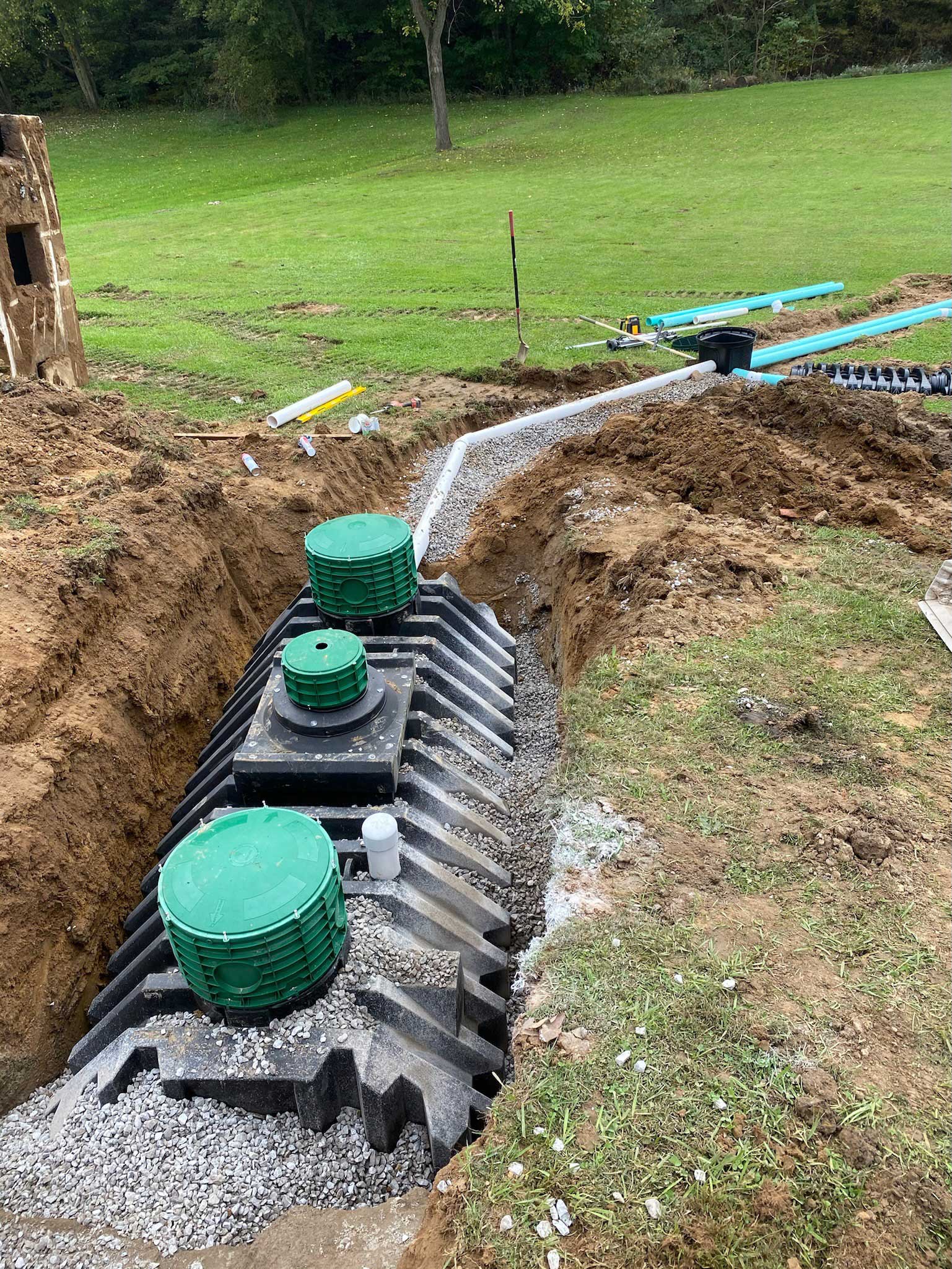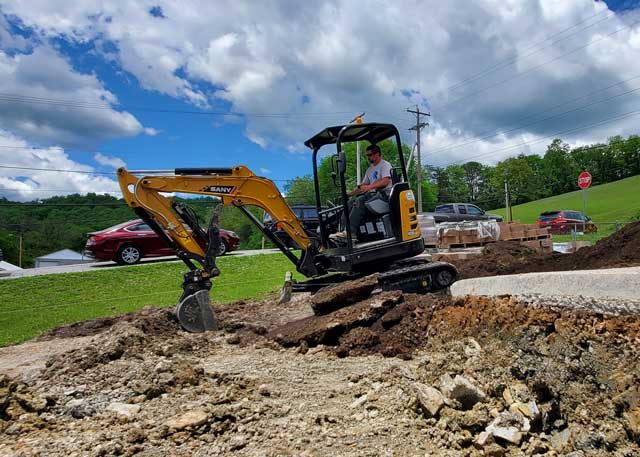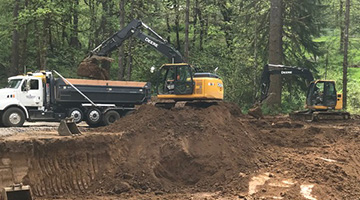Excavating Ohio - Leading Excavation Specialists for Ohio Projects
Excavating Ohio - Leading Excavation Specialists for Ohio Projects
Blog Article
In-Depth Exploration: The Science Behind Superior Excavation Practices
From old hand tools to modern hydraulic excavators, the development of excavation methods has been a testament to human ingenuity and technological developments. What really establishes premium excavation methods apart is a deep understanding of geological principles, combined with the usage of advanced devices and methods.
Development of Excavation Strategies
Throughout history, the evolution of excavation strategies has played a crucial duty in advancing construction practices and historical discoveries. From the primary devices used by our forefathers to the advanced machinery utilized in modern times, the progression of excavation approaches has dramatically transformed just how we approach different tasks.
In ancient times, manual labor with standard devices such as shovels, pickaxes, and wheelbarrows was the primary approach of excavation. This labor-intensive process limited the deepness and scope of excavations, commonly resulting in sluggish progression and restricted accessibility to particular sites. Nevertheless, as civilizations advanced, so did the techniques and tools used for excavation.
The Industrial Transformation noted a turning point in excavation methods with the intro of steam-powered machinery. This development changed the area, allowing for faster and more comprehensive excavations. In modern times, innovation plays a critical duty in excavation, with developments like general practitioner systems, drones, and 3D scanning enhancing precision and effectiveness in the area. The advancement of excavation strategies proceeds to form the way we develop, check out, and recognize the globe around us.
Function of Innovation in Excavation

The combination of sophisticated innovation has basically transformed the area of excavation, improving accuracy and efficiency to unmatched degrees. One of the crucial technological advancements that has significantly influenced excavation methods is the usage of GPS systems. These systems permit for accurate mapping of excavation websites, allowing drivers to precisely find below ground energies and structures. Furthermore, using telematics in excavation devices has actually allowed real-time monitoring of maker performance, bring about positive upkeep and raised operational performance.
In addition, the introduction of 3D modeling and simulation software has streamlined the preparation procedure for excavation projects. Engineers and operators can currently visualize the entire excavation process before damaging ground, optimizing and identifying potential difficulties workflow. In combination with this, the implementation of drones in excavation activities has facilitated airborne studies, volumetric dimensions, and website examinations with unmatched rate and precision.
Geological Concepts in Excavation
An understanding of geological concepts is essential for ensuring the architectural integrity and stability of excavation sites. Geological elements play a critical duty in determining the feasibility and safety of excavation tasks (septic ohio). One vital geological principle to take into consideration is the type of soil or rock existing at the site. Different dirt kinds, such as crushed rock, sand, or clay, have differing degrees of stability and need different excavation techniques. Cohesive dirts like clay might need additional assistance to stop collapses, while sandy soils may be susceptible to erosion throughout excavation.
By performing thorough geological surveys and analysis, designers and excavators can establish techniques to minimize risks and make sure the effective completion of excavation jobs. Inevitably, incorporating geological principles right into excavation techniques is essential for achieving risk-free, reliable, and sustainable results.

Newest Tools for Excavation
In content the world of excavation techniques, modern advancements in tools have actually reinvented the effectiveness and precision of excavation processes. One of the latest devices making waves in the industry is the use of drones equipped with advanced imaging technology. These drones can offer detailed airborne studies of excavation websites, using real-time data on topography and potential hazards. This information aids in far better planning and decision-making during the excavation process.
Another cutting-edge device getting popularity is the execution of 3D printing innovation for creating personalized excavation devices. This enables for the manufacturing of specialized tools that are customized to the certain requirements of a job, increasing performance and decreasing downtime.
In addition, innovations in materials scientific research have actually led to the advancement of more powerful and a lot more sturdy excavation devices. dump truck companies in ohio. Tungsten carbide-tipped excavator attachments, for instance, deal remarkable performance in difficult ground problems, enhancing performance on-site
Science's Effect on Excavation Practices

Furthermore, clinical research study link on dirt mechanics and geotechnical engineering has actually provided important understandings right into dirt behavior, enabling excavation specialists to make informed choices regarding excavation techniques and soil stablizing methods. Generally, scientific research continues to drive advancement and improvement in excavation methods, making excavation tasks more effective, economical, and sustainable.

Verdict
In conclusion, the development of excavation methods has actually been significantly affected by advancements in modern technology and a deeper understanding of geological concepts. The current tools and tools made use of in excavation have actually improved efficiency and accuracy in the this link area. The application of clinical knowledge has dramatically enhanced excavation techniques, bring about extra sustainable and effective approaches for digging deep into numerous sorts of products.
In the world of excavation methods, contemporary developments in devices have transformed the performance and accuracy of excavation procedures. By leveraging scientific principles, the excavation sector has actually been able to considerably improve performance, accuracy, and security in excavation processes. GPR enables excavation teams to non-invasively check and map subsurface structures, utilities, and prospective risks, allowing them to intend excavation jobs with greater precision and reduced danger of accidents.
Additionally, scientific research study on soil auto mechanics and geotechnical design has actually given valuable insights right into dirt behavior, allowing excavation professionals to make enlightened decisions pertaining to excavation methods and dirt stabilization techniques. On the whole, science proceeds to drive innovation and renovation in excavation practices, making excavation jobs more effective, cost-effective, and sustainable.
Report this page